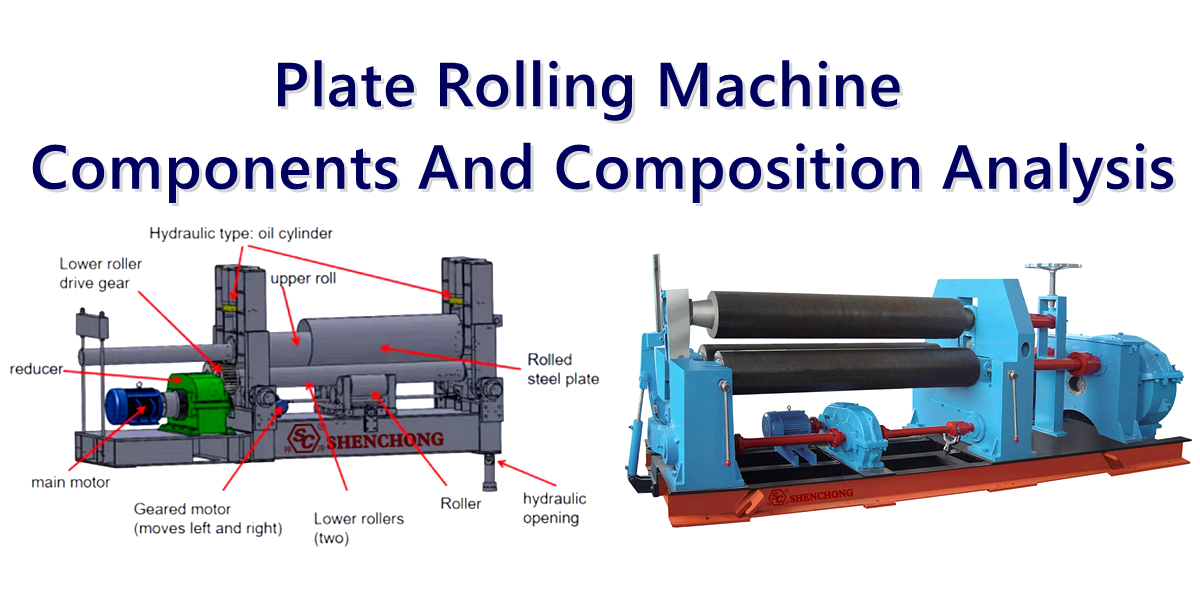Table of Contents
As the commonly used material, metal sheets have different application requirements in different fields. The appropriate thickness selection of the sheet is crucial for the quality and stability of the product. When working with sheet metal, it is common for the term “gauge” to be used. For example, someone unfamiliar with the gauge system may not understand what is meant by 18 gauge steel.
This article provides a brief introduction to the sheet metal gauge, which is the thickness of conventional metal sheets. Readers can use below sheet metal gauge charts to choose the appropriate thickness of metal sheets according to their actual needs and application fields to improve production efficiency and product quality.
What Is Sheet Metal Gauge?
Sheet metal gauge size is a number that represents the thickness of a metal plate. The equivalent thickness of each size standard is different, and these standards are formulated based on the weight of the given material sheet.
Sheet Metal Gauge Charts
Gauges are used to specify the thickness of a sheet metal. Gauges are neither standard nor metric and the values are independent of those measurement systems. A gauge conversion chart can be used to determine the actual thickness of sheet metal in inches or millimeters. For example, 18 gauge steel, according to a gauge conversion chart, is 0.0478 inch or 1.214 millimeter. The gauge number “18” holds no relevance to the actual measurements.
Sheet metal gauge charts are indispensable tools, providing a numerical representation of metal thickness. These charts simplify material selection by standardizing measurements. By checking the charts, users can simply match the sheet metal gauge with the thickness of the sheet plate.
Relationship Between Gauge And Thickness
The sheet metal gauge system follows a counter intuitive sequence where a higher gauge number indicates a thinner piece of metal. For instance, a 30-gauge piece is thinner than a 20-gauge piece. It should be noted that zinc sheet is different from other metal sheets, with higher gauge numbers indicating thicker zinc sheets.
Standard Gauge Systems
Gauge sizes are not universal across all materials. There are several different gauge systems used today, with specific gauge designations used for specific metal types. For example, in one gauge system, 18 gauge steel measures 0.0478 inches thick, but 18 gauge aluminum is 0.0403 inches thick. Because of the varying thicknesses, a gauge chart should be used to ensure the metal meets the required dimensions.
United States uses the Brown & Sharpe gauge system, which used for most non-ferrous metals, such as aluminum and brass and differs from other country-specific systems. In the UK, Birmingham gauge (BG) is used for various metals and should not be confused with Birmingham wire gauge (BWG). BWG is used for wires. Standard gauge charts commonly display measurements in both inches and millimeters.
History Of The Gauge System
The gauge system has long history in metal fabrication. It most likely originated from the British wire industry before the standard and metric measurement systems were widely adopted. At that time, gauges were used to describe the diameter of the metal wire being drawn. Since then, it has remained a prevalent method of designating the thickness of both wire and sheet metal.
Gauge Variation In Different Materials
Because the sheet metal gauge depends on the material sheet weight per area, different materials adhere to different gauge charts. For example, stainless steel utilizes its own gauge chart, whereas aluminum’s thickness is measured by using an aluminum specific gauge chart. This distinction is crucial for users to select the right gauge for a project.
Steel Gauge Chart
For steel, gauge numbers commonly fall between 3 and 30. The standard gauges for steel usually reflect the material’s weight rather than a direct thickness measurement. Here is simplified charts for common steel gauges and their corresponding thicknesses in inches and millimeters. To determine what metal gauge you need, use these sheet metal gauge charts:
Buy US Standard Steel Sheets
Gauge | US Standard Gauge | |
| inch | mm |
7/00 | 0.5 | 12.7 |
6/00 | 0.469 | 11.908 |
5/00 | 0.438 | 11.113 |
4/00 | 0.406 | 10.32 |
3/00 | 0.375 | 9.525 |
2/00 | 0.344 | 8.733 |
1/00 | 0.313 | 7.938 |
1 | 0.281 | 7.145 |
2 | 0.266 | 6.746 |
3 | 0.25 | 6.35 |
4 | 0.234 | 5.954 |
5 | 0.219 | 5.558 |
6 | 0.203 | 5.159 |
7 | 0.188 | 4.763 |
8 | 0.172 | 4.366 |
9 | 0.156 | 3.97 |
10 | 0.141 | 3.571 |
11 | 0.125 | 3.175 |
12 | 0.109 | 2.779 |
13 | 0.094 | 2.383 |
14 | 0.078 | 1.984 |
15 | 0.07 | 1.786 |
16 | 0.063 | 1.588 |
17 | 0.056 | 1.43 |
18 | 0.05 | 1.27 |
19 | 0.044 | 1.113 |
20 | 0.038 | 0.953 |
21 | 0.034 | 0.874 |
22 | 0.031 | 0.795 |
23 | 0.028 | 0.714 |
24 | 0.025 | 0.635 |
25 | 0.022 | 0.556 |
26 | 0.019 | 0.478 |
27 | 0.017 | 0.437 |
28 | 0.016 | 0.396 |
29 | 0.014 | 0.358 |
30 | 0.013 | 0.318 |
31 | 0.011 | 0.277 |
32 | 0.01 | 0.259 |
33 | 0.009 | 0.239 |
34 | 0.009 | 0.218 |
35 | 0.008 | 0.198 |
36 | 0.007 | 0.178 |
37 | 0.007 | 0.168 |
38 | 0.006 | 0.16 |
39 | 0.006 | 0.15 |
40 | 0.006 | 0.14 |
41 | 0.005 | 0.135 |
42 | 0.005 | 0.13 |
43 | 0.005 | 0.124 |
44 | 0.005 | 0.119 |
Buy Mild Steel Sheets
Mild Steel Gauge Chart | ||
Gauge | inch | mm |
3 | 0.239 | 6.073 |
4 | 0.224 | 5.695 |
5 | 0.209 | 5.314 |
6 | 0.194 | 4.935 |
7 | 0.179 | 4.554 |
8 | 0.164 | 4.176 |
9 | 0.15 | 3.797 |
10 | 0.135 | 3.416 |
11 | 0.12 | 3.038 |
12 | 0.105 | 2.657 |
13 | 0.09 | 2.278 |
14 | 0.075 | 1.897 |
15 | 0.067 | 1.709 |
16 | 0.06 | 1.519 |
17 | 0.054 | 1.367 |
18 | 0.048 | 1.214 |
19 | 0.042 | 1.062 |
20 | 0.036 | 0.912 |
21 | 0.033 | 0.836 |
22 | 0.03 | 0.759 |
23 | 0.027 | 0.683 |
24 | 0.024 | 0.607 |
25 | 0.021 | 0.531 |
26 | 0.018 | 0.455 |
27 | 0.016 | 0.417 |
28 | 0.015 | 0.378 |
29 | 0.014 | 0.343 |
30 | 0.012 | 0.305 |
31 | 0.011 | 0.267 |
32 | 0.01 | 0.246 |
33 | 0.009 | 0.229 |
34 | 0.008 | 0.208 |
35 | 0.008 | 0.191 |
36 | 0.007 | 0.17 |
37 | 0.006 | 0.163 |
38 | 0.006 | 0.152 |
Buy Stainless Steel Sheets
Stainless Steel Gauge Chart | ||
Gauge | inch | mm |
6/00 | 0.469 | 11.905 |
5/00 | 0.438 | 11.113 |
4/00 | 0.406 | 10.317 |
3/00 | 0.375 | 9.525 |
2/00 | 0.344 | 8.73 |
1/00 | 0.313 | 7.938 |
1 | 0.281 | 7.142 |
2 | 0.266 | 6.746 |
3 | 0.25 | 6.35 |
4 | 0.234 | 5.954 |
5 | 0.219 | 5.555 |
6 | 0.203 | 5.159 |
7 | 0.188 | 4.763 |
8 | 0.172 | 4.366 |
9 | 0.156 | 3.967 |
10 | 0.141 | 3.571 |
11 | 0.125 | 3.175 |
12 | 0.109 | 2.779 |
13 | 0.094 | 2.38 |
14 | 0.078 | 1.984 |
15 | 0.07 | 1.786 |
16 | 0.063 | 1.588 |
17 | 0.056 | 1.427 |
18 | 0.05 | 1.27 |
19 | 0.044 | 1.11 |
20 | 0.038 | 0.953 |
21 | 0.034 | 0.874 |
22 | 0.031 | 0.792 |
23 | 0.028 | 0.714 |
24 | 0.025 | 0.635 |
25 | 0.022 | 0.556 |
26 | 0.019 | 0.475 |
27 | 0.017 | 0.437 |
28 | 0.016 | 0.396 |
29 | 0.014 | 0.358 |
30 | 0.013 | 0.318 |
31 | 0.011 | 0.277 |
32 | 0.01 | 0.259 |
33 | 0.009 | 0.239 |
34 | 0.009 | 0.218 |
35 | 0.008 | 0.198 |
36 | 0.007 | 0.178 |
37 | 0.007 | 0.168 |
38 | 0.006 | 0.157 |
Buy Aluminum Sheets
Aluminum Gauge Chart | ||
Gauge | inch | mm |
6/00 | 0.58 | 14.732 |
5/00 | 0.517 | 13.119 |
4/00 | 0.46 | 11.684 |
3/00 | 0.41 | 10.404 |
2/00 | 0.365 | 9.266 |
1/00 | 0.325 | 8.252 |
1 | 0.289 | 7.348 |
2 | 0.258 | 6.543 |
3 | 0.229 | 5.827 |
4 | 0.204 | 5.189 |
5 | 0.182 | 4.62 |
6 | 0.162 | 4.115 |
7 | 0.144 | 3.665 |
8 | 0.129 | 3.264 |
9 | 0.114 | 2.906 |
10 | 0.102 | 2.588 |
11 | 0.091 | 2.304 |
12 | 0.081 | 2.052 |
13 | 0.072 | 1.829 |
14 | 0.064 | 1.628 |
15 | 0.057 | 1.45 |
16 | 0.051 | 1.29 |
17 | 0.045 | 1.151 |
18 | 0.04 | 1.024 |
19 | 0.036 | 0.912 |
20 | 0.032 | 0.813 |
21 | 0.029 | 0.724 |
22 | 0.025 | 0.643 |
23 | 0.023 | 0.574 |
24 | 0.02 | 0.511 |
25 | 0.018 | 0.455 |
26 | 0.016 | 0.404 |
27 | 0.014 | 0.361 |
28 | 0.013 | 0.32 |
29 | 0.011 | 0.287 |
30 | 0.01 | 0.254 |
31 | 0.009 | 0.226 |
32 | 0.008 | 0.203 |
33 | 0.007 | 0.18 |
34 | 0.006 | 0.16 |
35 | 0.006 | 0.142 |
36 | 0.005 | 0.127 |
37 | 0.005 | 0.114 |
38 | 0.004 | 0.102 |
Buy Galvanized Steel Sheets
Galvanized Steel Gauge Chart | ||
Gauge | inch | mm |
8 | 0.168 | 4.267 |
9 | 0.153 | 3.886 |
10 | 0.138 | 3.505 |
11 | 0.123 | 3.124 |
12 | 0.108 | 2.743 |
13 | 0.093 | 2.362 |
14 | 0.079 | 2.007 |
15 | 0.071 | 1.803 |
16 | 0.064 | 1.626 |
17 | 0.058 | 1.473 |
18 | 0.052 | 1.321 |
19 | 0.046 | 1.168 |
20 | 0.04 | 1.016 |
21 | 0.037 | 0.94 |
22 | 0.034 | 0.864 |
23 | 0.031 | 0.787 |
24 | 0.028 | 0.711 |
25 | 0.025 | 0.635 |
26 | 0.022 | 0.559 |
27 | 0.02 | 0.508 |
28 | 0.019 | 0.483 |
29 | 0.017 | 0.432 |
30 | 0.016 | 0.406 |
Buy Brass Sheets
Brass Gauge Chart | ||
Gauge | inch | mm |
7 | 0.1443 | 3.665 |
8 | 0.1285 | 3.264 |
9 | 0.1144 | 2.906 |
10 | 0.1019 | 2.588 |
11 | 0.09074 | 2.305 |
12 | 0.08081 | 2.053 |
14 | 0.06408 | 1.628 |
16 | 0.05082 | 1.291 |
18 | 0.0403 | 1.024 |
20 | 0.03196 | 0.812 |
22 | 0.02535 | 0.644 |
24 | 0.0201 | 0.511 |
26 | 0.01594 | 0.405 |
28 | 0.01264 | 0.321 |
30 | 0.01003 | 0.255 |
Buy Copper Sheets
Copper Gauge Chart | ||
Gauge | inch | mm |
7 | 0.18 | 4.572 |
8 | 0.165 | 4.191 |
9 | 0.148 | 3.759 |
10 | 0.134 | 3.404 |
11 | 0.12 | 3.048 |
12 | 0.109 | 2.769 |
14 | 0.083 | 2.108 |
16 | 0.065 | 1.651 |
18 | 0.049 | 1.245 |
20 | 0.035 | 0.889 |
22 | 0.028 | 0.711 |
24 | 0.022 | 0.559 |
26 | 0.018 | 0.457 |
28 | 0.014 | 0.356 |
30 | 0.012 | 0.305 |
Tools For Measuring Sheet Metal Gauges

Precision in measuring sheet metal thickness is crucial in most manufacturing and engineering applications. Accurate measurement ensures that the metal meets the required specifications for a given project. Tools such as calipers, micrometers, gauge wheels and ultrasonic measuring instrument are commonly utilized for this purpose.
1. Tape Measure
A tape measure is the most common tool for measuring the thickness of metal plates, suitable for thinner metal plates (usually less than 5 millimeters). When measuring, slide the tape measure along the edge of the metal plate to the other end and read the number on the tape measure.
2. Brush Method
The brush method is a simple method for measuring the thickness of a metal plate, in which the surface of the metal plate is coated with a layer of pigment or paint and evenly brushed with a brush. Once the coating begins to dry, use a caliper or tape measure to measure the thickness of the coating and subtract the thickness of the undeposited coating to obtain the thickness of the metal plate.
3. Universal Caliper
Universal calipers are a commonly used precision measuring tool that can be used to measure the thickness, length, width, and other dimensions of metal plates. High reliability and accuracy, but relatively expensive, suitable for situations with high precision requirements.
Calipers
Calipers are versatile measuring instruments with two opposable arms that can measure the distance between them. They come in various types, including digital, vernier, and dial calipers. Digital calipers are particularly popular due to their ease of use and digital readout that displays measurements quickly and accurately. Measurements are typically available in both metric and imperial units.
Micrometers
Micrometers provide highly precise measurements of sheet metal thickness. They function with a calibrated screw mechanism for fine adjustments and an anvil and spindle that touch the metal surface. Micrometers are favored for their precision, usually measuring thickness to within +/- 0.001 inches (0.025 mm). They also often feature digital screens, although analog versions with a graduated scale are still in use.
4. Gauge Wheels
Gauge wheels, also known as thickness gauges or gauge sliders, are specialized tools designed specifically for measuring sheet metal. They usually consist of a rotating wheel marked with both the gauge number and corresponding thickness measurements. They are convenient for quickly gauging thickness without the need for a direct reading, providing a visual and tactile reference for sheet metal gauges.
5. Ultrasonic Testing Method
Ultrasonic testing method uses ultrasonic probes to measure the thickness of metal plates. The controller can measure the reflection of signals to determine the thickness and quality of many metal materials. This method is suitable for detecting thick metal plates, with high measurement accuracy, but requires professional personnel for measurement.
6. Optical Microscopy Method
The optical microscope method can be used to measure the thickness of a metal plate by examining the upper and lower surfaces of the metal plate using an optical microscope, and determining the distance using a calibration ruler. But this method is only applicable to non reflective and asymmetric metal plates.
Notes And Techniques Of Measuring Sheet Metal Gauges
- When using a tape measure and a universal caliper to measure the thickness of a metal plate, it is necessary to ensure that the measuring tool panel and the surface of the metal plate remain vertical to ensure accurate measurement.
- When using the brush method, it is important to ensure that the coating is uniform and maintained vertically to avoid uneven coating or insufficient thickness.
- When using ultrasonic testing, it is necessary to receive training and authorization from professional personnel. In daily use, it is necessary to regularly maintain and upkeep the equipment to ensure the accuracy and reliability of measurements.
- When using the optical microscope method, it is necessary to pay attention to using appropriate light sources and observation angles, and avoid obstruction and reflection.
- When using any measurement method, it is necessary to handle the metal plate carefully to avoid damage or deformation.
Conclusion
Sheet metal gauge size is a number that represents the thickness of a metal plate. By using the sheet metal gauge chart, people can choose the appropriate thickness of metal sheets according to their actual needs and application fields to improve production efficiency and product quality. Also, this article introduces the ways of measuring the thickness of the sheet metal plates, and readers can select one of them based on the needs.





